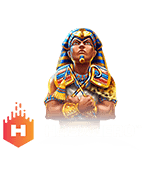Decentralized Finance growth (Defi): Cryptocurrency Revolution Revolution
In recent years, the financial world has undergone a significant transformation. The increase in cryptocurrencies such as Bitcoin and Ethereum paved the way for a new era of decentralized financial instruments known as decentralized finance (DEFI). In this article, we will go into the concept of defi, its main marks and what you need to know about the cryptocurrency revolution.
What are decentralized finances?
Decentralized finance refers to the economic system in which financial transactions are facilitated through blockchain technology without the need for intermediaries such as banks. In traditional finance, one institution (such as the bank) acts as both a lender and a borrower who charges interest on loans. This creates a bilateral market where borrowers have to trust lenders, while also cautious about their own financial position.
In contrast, Defi uses blockchain technology to create a more transparent, safer and decentralized financial transaction system. By removing the need for intermediaries, defi allows for peer -to -peer lending, borrowing, trade and other financial activities directly between the parties.
The main features of decentralized finance
So what makes Defi cries? Here are some key features that distinguish it from traditional finances:
1
Open source and transparent : Blockchain technology allows you to open the code, providing transparency and responsibility in all transactions.
- Security : Blockchain decentralized nature makes it practically impossible to manipulate or break transactions.
3
Decentralized Management : Decentralized finances are based on a network -driven node network, not on a single central authority (such as a bank).
- Liquidity and marketing : Defi platforms often provide liquidity of various financial instruments, making them more accessible to users.
Defi Applications Types
Defi has created many applications, each with its own use:
1
Decentralized Lending
: Platforms such as Uniswap and Aave allow users to lend cryptocurrency to others by earning interest on their main amount.
- Decentralized exchange (DEXS) : Dexs allow users to trade cryptocurrencies without relying on centralized stock exchanges or brokers.
3
StableCoins : Stabecoin platforms such as USDC, Dai and Pax provide a safe asset for investors who want to limit market volatility.
- Games and NFT : Defi -based gaming applications (such as Decentraland) offer new revenue flows through game purchases and virtual goods trade.
Defi Benefits
The decentralized financial revolution has many benefits:
1
Increased availability

: Defi allows users with limited financial resources to participate in traditional finance.
- lower fees : When intermediaries are excluded, defi transactions often come with a lower fee compared to traditional services.
3
Improved Security : Decentralized finances are based on blockchain technology, ensuring that all transactions are safe and safe.
- Innovation and growth potential : Defi ecosystem is constantly developing, promoting innovation and growth in different sectors (eg lending, loans).
Challenges and Risks
Like any new technology, Defi faces several challenges:
1
Regulatory uncertainty : Governments and governments are still thinking about how to deal with defi, which raises concerns about market stability and investor protection.
- Risks of volatility and liquidity : Defi applications can be highly volatile and liquidity problems can occur if there are not enough users who want to lend or borrow.
3
Safety threats : Although blockchain is usually safe, defi platforms are not immune to security violations.











